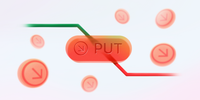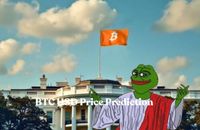Explore web search results related to this domain and discover relevant information.
There are 2 major types of options: call options and put options. When you buy a call option, you're buying the right to purchase a specific security at a locked-in price (the strike price) sometime in the future, or looking to capitalize on an increase in the underlying stock or index value. If the price of that security rises, you can make a profit by exercising the call contract and selling the stock at a higher market ...
There are 2 major types of options: call options and put options. When you buy a call option, you're buying the right to purchase a specific security at a locked-in price (the strike price) sometime in the future, or looking to capitalize on an increase in the underlying stock or index value. If the price of that security rises, you can make a profit by exercising the call contract and selling the stock at a higher market price or by selling to close the call for a potential gain.When you buy a put option, you're buying the right to sell a specific security at a locked-in price sometime in the future. If the price of that security falls, you can potentially make a profit by exercising the contract and buying the security at the lower market price, or by selling to close the contract for a potential gain.Let's look at the results of buying a call option versus buying a put option in 2 different scenarios. Scenario 1: Share value rises. Strike price for XYZ is $45. Stock price rises from $40 to $50. ... You exercise the option and pay $4,500 for shares of XYZ worth $5,000, which you can keep or turn around and sell on the open market.Your loss is limited to the premium for the put. Scenario 2: Share value falls. Strike price for XYZ is $35. Stock price falls from $40 to $30. ... You don't exercise the option. Your loss is limited to the premium for the call. ... You exercise the option. You sell your shares of XYZ to the option writer for $3,500, even though they're now worth only $3,000. If you bought those shares of XYZ on the open market, you keep the $500 cash difference between the two amounts.

Put options are “in the money” when the stock price is below the strike price at expiration. The put owner may exercise the option, selling the stock at the strike price. Or the owner can sell the put option to another buyer prior to expiration at fair market value.
With a limit order you specify the price you’re willing to accept for a trade, and if the market can’t meet your price, your trade won’t execute. If you’re going to trade a lot of options, it makes sense to find the best options broker for you. If you’re looking for brokers without an options commission, check out Robinhood and Webull. Traders buy a put option to magnify the profit from a stock’s decline.For example, if the stock fell from $40 to $20, a put seller would have a net loss of $1,700, or the $2,000 value of the option minus the $300 premium received. If the option is exercised on you, you’ll be forced to buy 100 shares of the stock at $40 per share, while the stock is trading in the market at $20 per share.Unlike selling a put option, selling a call option exposes you to uncapped losses (since a stock can rise to any price but cannot fall below $0). Either way, you could lose many times more money than the premium received. Many people think options are highly risky, and they can be, if they’re used incorrectly. But investors can also use options in a way that limits their risk while still allowing for profit on the rise or fall of a stock. ... U.S. markets close in 7mHow does a put option work and why would someone buy (or sell) one?

Call and put options give traders diverse opportunities to generate income, protect against losses, and speculate on the market across all types of market conditions. With this flexibility comes some complications, so it's important to learn how options work before jumping in.
Learn about fundamental options strategies like call and put options and how options-approved traders can include basic options strategies in their portfolios.All expressions of opinion are subject to change without notice in reaction to shifting market, economic or political conditions. Data contained herein from third party providers is obtained from what are considered reliable sources.If the share price exceeds $202.69 ($200 exercise price plus the $2.69 options premium), then the options trade is profitable. At this point, the trader could close the options trade and collect a profit or exercise their right to purchase the shares at $200 each, which at this point would be a discount to the market price.Short selling is an advanced trading strategy involving potentially unlimited risks, and must be done in a margin account. Margin trading increases your level of market risk.

Put options are “in the money” when the stock price is below the strike price at expiration. The put owner may exercise the option, selling the stock at the strike price. Or the owner can sell the put option to another buyer prior to expiration at fair market value.
With a limit order you specify the price you’re willing to accept for a trade, and if the market can’t meet your price, your trade won’t execute. If you’re going to trade a lot of options, it makes sense to find the best options broker for you. If you’re looking for brokers without an options commission, check out Robinhood and Webull. Traders buy a put option to magnify the profit from a stock’s decline.For example, if the stock fell from $40 to $20, a put seller would have a net loss of $1,700, or the $2,000 value of the option minus the $300 premium received. If the option is exercised on you, you’ll be forced to buy 100 shares of the stock at $40 per share, while the stock is trading in the market at $20 per share.Put options are a type of option that increases in value as a stock falls, making them a favorite among traders looking to make big gains quickly.Put options are a type of option that increases in value as a stock falls. A put allows the owner to lock in a predetermined price to sell a specific stock, while put sellers agree to buy the stock at that price.
If using this data in a published report, please cite Cboe Global Markets as the source.

Learn how put options can help hedge risks and profit during market downturns. Explore their mechanics, types, and key factors for effective trading.
Market downturns are nearly impossible to predict with any degree of accuracy. But what if there was a way to potentially capitalise even when financial markets fell? Put options stand out in this regard. Let’s understand more about put options and how to use them.The strike price is the agreed-upon price at which you can sell the underlying asset. It determines the potential profit or loss when exercising a put option. If the market price falls below the strike price, you can exercise the option and sell the asset at a higher price, effectively protecting yourself against further losses.Investors often utilize put options as a form of hedging, which involves taking an offsetting position to protect against potential losses. This is done to minimize downside risk and create a safeguard against unfavorable market movements by purchasing put options.Many companies listed on stock exchanges offer put options for their stocks. In the American options market, put options can be purchased through brokerage firms or online option trading platforms. Expiration dates for weekly options are every Friday except for the third Friday of a month.
A put option is a contract that gives the buyer the right but not the obligation to sell an asset at a specific price, at a specific date of expiry. The value of a put option increases if the asset's market price depreciates.
Let’s say that you thought that the share price of company ABC was going to fall from its current price of $30, and so you decide to open a put option with a strike price of $25. For stock options, each contract is worth the equivalent of 100 shares, but the price is usually quoted for one share. When dealing options, there is always a premium to be paid. If the premium of this option was $1 per share, your total premium is $100. If the price of ABC stock did fall, to a market price of $20, you could execute your right to sell the stock for the agreed strike price of $25 a share.To calculate the profit, you subtract the market price from the strike price, giving you a profit of $5 per share. Since put options come in lots of 100 shares, you multiply that $5 per share profit by 100, which yields a gross profit of $500.However, if the market had moved against you, you could let the option expire and your maximum loss would be cost of the initial $100 premium. Put options allow you to bet against the market because instead of taking ownership of an asset, you are speculating on an asset’s price movement.Since they can be used to short the market, you can use put options as a hedge against your other active positions in case one of them falls in value.

Buckinghamshire Council is putting its Queen Victoria Road offices in High Wycombe on the market.
Although the land is currently designated for employment use, the council’s own viability work shows that new office development would deliver lower returns and is considered an unattractive option in the current market.The council’s cabinet approved the plans to start to market the site at its meeting this morning, following criticism from Wycombe councillors.The council will now appoint a marketing agent and launch a sales campaign in December.A report prepared for the cabinet recommend marketing the 1.1-hectare plot, which includes four separate buildings.

Become a smarter investor with daily finance news, investing ideas, opportunities, and stock analysis.

Market Analysis by covering: S&P 500, United Kingdom 30-Year, Germany 10-Year, United States 3-Month. Read 's Market Analysis on Investing.com
Before deciding to trade in financial instrument or cryptocurrencies you should be fully informed of the risks and costs associated with trading the financial markets, carefully consider your investment objectives, level of experience, and risk appetite, and seek professional advice where needed.The data and prices on the website are not necessarily provided by any market or exchange, but may be provided by market makers, and so prices may not be accurate and may differ from the actual price at any given market, meaning prices are indicative and not appropriate for trading purposes.Michael Kramer is a member and investment adviser representative with Mott Capital Management. Mr. Kramer is not affiliated with this company and does not serve on the board of any related company that issued this stock. All opinions and analyses presented by Michael Kramer in this analysis or market report are solely Michael Kramer’s views.Stock Markets · Published 09/03/2025, 02:51 AM · S&P 500 Stalls at Put Wall as Yield Curve Approaches Breakout · View all comments (0)0 · Michael Kramer · Articles(1659) |My Homepage · Follow · US500 · -0.69% GB30YT=RR · 0.30% DE10YT=RR · -0.51% US3MT=X ·
Call option intrinsic value = Market price of underlying security - Strike price · Out-of-the-money (OTM) and at-the-money (ATM) put options have no intrinsic value because there's no benefit in exercising the option. Investors have the option of short-selling the stock at the current higher ...
Call option intrinsic value = Market price of underlying security - Strike price · Out-of-the-money (OTM) and at-the-money (ATM) put options have no intrinsic value because there's no benefit in exercising the option. Investors have the option of short-selling the stock at the current higher market price, rather than exercising an OTM put option at an undesirable strike price.What if the investor didn't own the SPY units, and the put option was purchased purely as a speculative trade? In this case, exercising the put option would result in a short sale of 100 SPY units at the $545 strike price. The investor could then buy back the 100 SPY units at the current market price of $535 to close out the short position.Put options only have value if the market price of the asset falls below the strike price. The price of a put is also affected by how far away the deadline is and how quickly the price of the underlying asset changes.Put options allow the holder to sell a security at a guaranteed price, even if the market price for that security has fallen lower. That makes them useful for hedging strategies as well as for speculative traders.
:max_bytes(150000):strip_icc()/putoption-Final-37c324dca2c64f1b90eb19f979e1a57d.jpg)
In finance, a put or put option is a derivative instrument in financial markets that gives the holder (i.e. the purchaser of the put option) the right to sell an asset (the underlying), at a specified price (the strike), by (or on) a specified date (the expiry or maturity) to the writer (i.e. ...
In finance, a put or put option is a derivative instrument in financial markets that gives the holder (i.e. the purchaser of the put option) the right to sell an asset (the underlying), at a specified price (the strike), by (or on) a specified date (the expiry or maturity) to the writer (i.e. ...A naked put, also called an uncovered put, is a put option whose writer (the seller) does not have a position in the underlying stock or other instrument. This strategy is best used by investors who want to accumulate a position in the underlying stock, but only if the price is low enough. If the buyer fails to exercise the options, then the writer keeps the option premium. If the underlying stock's market price is below the option's strike price when expiration arrives, the option owner (buyer) can exercise the put option, forcing the writer to buy the underlying stock at the strike price.But if the stock's market price is above the option's strike price at the end of expiration day, the option expires worthless, and the owner's loss is limited to the premium (fee) paid for it (the writer's profit). The seller's potential loss on a naked put can be substantial.The current price is $50 per share, and Trader A pays a premium of $5 per share. If the price of XYZ stock falls to $40 a share right before expiration, then Trader A can exercise the put by buying 100 shares for $4,000 from the stock market, then selling them to Trader B for $5,000.Put options are most commonly used in the stock market to protect against a fall in the price of a stock below a specified price.

AppLovin, along with Robinhood Markets and Emcore Group, will replace MarketAxess, Ceasars Entertainment and Enphase Energy in the benchmark index on that day. APP calls are outnumbering puts ~4:3, but the September 12th 520.00 put is the highest volume contract (volume is 5,259).
The Cboe Volatility Index (VIX + 0.14 to 15.32) has been on both sides of the unchanged line today (intraday range is 14.99-15.65), as equity markets are mostly higher around the midday mark (DJI - 3, SPX + 11, COMP + 116). VIX option volume is below average today as the index is currently missing from the "Top Volume by Underlying" list. The volume put/call ratio is currently 0.36, but the highest volume contract is the September 17th 17.00 put (volume is 18,050 vs.Schwab's daily stock options market update provides you with the latest activity, news, insights, and commentary from Schwab's top trading experts.Stocks are starting the week with a positive bias as investors position ahead of the monthly inflation reports and earnings from tech bellwether Oracle.This time it's inflation after last Friday's August jobs report sent Treasury yields plummeting and raised fears of a possible economic slowdown. Stocks edged up slightly early Monday, lifted by pre-market gains for most of the mega caps and overseas strength, but volatility climbed.
A put is a contract sold in the options market that gives its owner the right, but not the obligation, to sell a certain amount of the underlying asset at a set price within a specific time. The buyer of a put option believes that the underlying stock will drop below the exercise price before ...
A put is a contract sold in the options market that gives its owner the right, but not the obligation, to sell a certain amount of the underlying asset at a set price within a specific time. The buyer of a put option believes that the underlying stock will drop below the exercise price before the expiration date.Out of the money (OTM) and at the money (ATM) put options have no intrinsic value because there would be no benefit in exercising the option. Investors could short-sell the stock at the current higher market price, rather than exercising an out-of-the-money put option at an unprofitable strike price.If ABC shares drop to $8, the investor's put option is in the money (ITM)—which means that the strike price is below the market price of the underlying asset—and they can close their option position by selling the contract on the open market.On the other hand, they can purchase 100 shares of ABC at the existing market price of $8, and then exercise their contract to sell the shares for $10. Disregarding commissions, the profit for this position is $200, or 100 x ($10 - $8). Remember that the investor paid a $100 premium for the put option, giving them the right to sell their shares at the exercise price.
:max_bytes(150000):strip_icc()/put.asp-final-996d5c5afd724a0e9a7f239da5236ff8.jpg)
Find the answer for Put on the market from the people who brought you the USA TODAY Daily Crossword Puzzle.
In case you've faced some hurdles solving the clue, Put on the market, we've got the answer for you.Now, let's delve into solving the Put on the market crossword clue, featured as 63 Down in the USA Today Crossword on August 26, 2025.
For a put buyer, if the market price of the underlying stock moves in your favor, you can elect to "exercise" the put option or sell the underlying stock at the strike price. American-style options allow the put holder to exercise the option at any point up to the expiration date.
If the market price decreases, you have the obligation to buy back the option from the seller at the strike price. » Ready to invest? Here are our best brokers for options · Put options can function like a kind of insurance for the buyer.If the stock declines below the strike price, the put option is considered to be “in the money.” An in-the-money put option has "intrinsic value" because the market price of the stock is lower than the strike price.First, if the buyer owns the stock, the put option contract can be exercised, putting the stock to the put seller at the strike price. This illustrates the "protective" put because even if the stock's market price falls, the put buyer can still sell the shares at the higher strike price instead of the lower market price.The graph below shows the put buyer's profit or payoff on the put with the stock at different prices. Because one contract represents 100 shares, for every $1 decrease in the stock's market price below the strike price, the total value of the option increases by $100.


LONDON, Sept 4 (Reuters) - The ... that market will be far more complicated than steadying an equities wobble. Tighter monetary and fiscal policy would typically be the solution to worries about aggravated inflation and mounting public debt, but that prescription can also depress growth and potentially exaggerate a tax revenue problem. Sign up here. Deftness is required. What's not required is easy money. For decades, equity investors have talked about the so-called central bank "put" - options ...
LONDON, Sept 4 (Reuters) - The epicenter of market anxiety right now is spiking long-term government borrowing rates, and rescuing that market will be far more complicated than steadying an equities wobble. Tighter monetary and fiscal policy would typically be the solution to worries about aggravated inflation and mounting public debt, but that prescription can also depress growth and potentially exaggerate a tax revenue problem. Sign up here. Deftness is required. What's not required is easy money. For decades, equity investors have talked about the so-called central bank "put" - options market parlance for a policy safety net that limits sharp stock losses with restorative interest rate cuts and liquidity injections.Popularized during the tenure of former Federal Reserve Chair Alan Greenspan in the 1990s, the "Fed put" essentially worked as advertised. Authorities could justify easing policy with the need to tamp down excess volatility and business uncertainty or the argument that the "negative wealth effect" could harm the wider economy. Many economists and market observers worried back then that encouraging this belief would encourage undue risk-taking, which largely proved correct in the lead-up to the 2007-2008 banking crash and global recession.But central banks' decade-long response to that credit shock took the form of balance sheet expansion and money printing, resuscitating the idea that a policy put existed. Not only have these actions skewed markets by essentially making Wall Street equities "risk-free" over the past decade, including during the COVID-19 pandemic, but they have also allowed the U.S.One glance at the performance of long-term government bonds this year - and particularly this week - suggests markets are calling time on that debt buildup. ... If so, perhaps it's time to activate the central bank put to keep debt affordable and governments solvent?

The market does what it wants, when it wants to do it. It is the real-time personification of collective human psychology, with fear and greed on full display. That’s what makes it so hard and at the same time so interesting. There are times when skepticism is warranted and other times when you need to suspend disbelief, with no manual to help you decipher which situation applies. Find some charts that speak to you personally, and put ...
The market does what it wants, when it wants to do it. It is the real-time personification of collective human psychology, with fear and greed on full display. That’s what makes it so hard and at the same time so interesting. There are times when skepticism is warranted and other times when you need to suspend disbelief, with no manual to help you decipher which situation applies. Find some charts that speak to you personally, and put them on your wall as a constant reminder that the range of possible outcomes is much wider than any of us think.View the video of this post on YouTube here. This week’s post is sponsored by YCharts. Markets don’t move in straight lines, and 2025 has been a masterclass in that. That’s why I partnered with YCharts to create a visual breakdown of the most important market trends and what they could signal for the road ahead.They say a picture is worth a thousand words and in markets that is absolutely true.Having a few extreme charts on your wall can be a helpful reminder that there is no such thing as “can’t,” “won’t,” or “has to” in markets.

Home / News / Bitcoin (BTC) News Today / US Jobs Data, BTC USD and Bond Market Rally Put Fed Rate Cuts in Focus
US jobs data, bond yields, and Trump’s tariffs are shaping expectations for a September Fed rate cut. Here’s what BTC USD, CoinGlass and DeF..The anticipation follows weaker labor market signals and a stunted crypto market and BTC ▲0.07%. The JOLTS report showed job openings fell to 7.18M in July, missing forecasts of 7.38M and marking the lowest reading since 2021.On the DeFi side, stablecoin market cap rose 42% year-on-year, showing investors still want to hedge against rate-driven volatility. Solana and Ethereum TVL each gained +20% over the past quarter, while smaller chains lagged.US jobs data, bond yields, and Trump’s tariffs are shaping expectations for a September Fed rate cut. Here’s what CoinGlass and DeFiLlama data reveal about markets.
Put options are a credible option for investors, depending on which way you think an equity’s price will move. Find out how they work in our guide.
Put options are one of two contract options that allow an investor to buy or sell the underlying asset or security within a predetermined timeframe. If you are looking for an alternative to short-selling an equity in the markets, read on as we explain how put options work and how to include them into your financial investing arsenal.Buying a put option and short selling an underlying asset are two bearish approaches to the financial markets. However, there are some key differences between them too. For instance, a buyer of put options has a capped loss from the moment they enter into the contract.If you believe the price of an underlying asset is likely to rise in the coming months, you could look to become a put seller. By selling a put option contract, you are confident that the market value of an asset will be steady or strong in the short-to-medium term.In addition, put options investors can sell on their existing options to generate additional revenue if they wish. It can be a good move in a bull market, where assets are less likely to be put to the seller.




:max_bytes(150000):strip_icc()/putoption-Final-37c324dca2c64f1b90eb19f979e1a57d.jpg)
:max_bytes(150000):strip_icc()/put.asp-final-996d5c5afd724a0e9a7f239da5236ff8.jpg)

